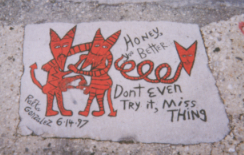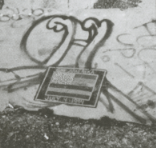 Vroman’s Bookstore, an independent bookstore in Pasadena, will be appearing on season four of the NBC series, Parks and Recreation. According to Jacket Copy, the bookseller will host an author event headlined by Leslie Knope, a parks department bureaucrat played by Amy Poehler.
Vroman’s Bookstore, an independent bookstore in Pasadena, will be appearing on season four of the NBC series, Parks and Recreation. According to Jacket Copy, the bookseller will host an author event headlined by Leslie Knope, a parks department bureaucrat played by Amy Poehler.
Hyperion will release the actual title in paperback format in October. Poehler’s character wrote Pawnee: The Greatest Town in America, a 240-page humor book contains illustrations, photographs and commentary from all of the show’s characters.
Here’s more from NBC.com: “Each chapter will explore a different aspect of the fictional town’s history and expand upon events hinted at in the series, such as: the time the whole town was on fire, its long list of ridiculous town slogans, and the ongoing raccoon infestation. Knope, a resident of Pawnee since her childhood, provides all of the research and comical insights into this Midwestern town that fans have grown to love.”
New Career Opportunities Daily: The best jobs in media.
By Justyna Zajac and Michelle Rafferty
“Growth of Overt homosexuality in City Provokes Wide Concern”
-New York Times (headline in 1963)
The world recoiled when the gay community started receiving credit for its influence in fashion and culture, but at least, according to Christopher Reed, they were being acknowledged. In his new book Art and Homosexuality: A History of Ideas, Reed argues that for some time the professional art world plain ignored the gay presence.
We had the chance to speak with Reed recently at his Williams Club talk, where he laid out the tumultuous relationship between art and activism. Below we present a few of the controversial things we learned.
1.) Art that didn’t get a chance…
During the most formative years of the gay rights movement in the 70s and on through the late 80s, arts publications and professionals, and even museums like the Museum of Modern Art, ignored imagery associated with gay and lesbian identity. Imagery like the graffiti pictured below which emerged in urban areas during the 70s:


Grafitti on “The Rocks,” Lincoln Park, Chicago, mid-1990s.
According to Reed, “These sites of visual history were destroyed with no organized documentation when rising property values prompted local governments to reclaim these areas.”
2.) Censorship…
Is right for people to ban art today? Even if it’s in the imaginary town of Pawnee, Indiana? Reed surprised us with his answer, making us consider that there’s actually a worse kind of censorship. Listen below to hear what he said.
Transcript:
Censorship is an interesting question because there are overt examples of censorship like what just happened with the Hide/Seek show and the David Wojnarowicz piece, where particular politicians make a statement to their constituency by removing something that’s on exhibition. And then the kind of thing that you’re talking about where institutions simply don’t show things or don’t buy things – in the case of libraries – or don’t do things or don’t let particular people in, which often doesn’t read as censorship because people never realize what they could be seeing or could be reading, or could be going on, because the institution has already created a kind of logic in which that kind of thing doesn’t exist.
And so in a lot of ways I actually think that’s the most dangerous kind of censorship because people aren’t aware of it and they can’t make a
 Vroman’s Bookstore, an independent bookstore in Pasadena, will be appearing on season four of the NBC series, Parks and Recreation. According to Jacket Copy, the bookseller will host an author event headlined by Leslie Knope, a parks department bureaucrat played by Amy Poehler.
Vroman’s Bookstore, an independent bookstore in Pasadena, will be appearing on season four of the NBC series, Parks and Recreation. According to Jacket Copy, the bookseller will host an author event headlined by Leslie Knope, a parks department bureaucrat played by Amy Poehler.



